
Bowling Party at Troy Lanes, December 29, 2012
Brain & Spine Surgery

Bowling Party at Troy Lanes, December 29, 2012
 Three-fourths of patients with Alzheimer’s disease or frontal-lobe degeneration had MRI-detected biomarker levels that correlated with the diagnoses, suggesting MRI has potential as a screening tool for the conditions, investigators reported.
Three-fourths of patients with Alzheimer’s disease or frontal-lobe degeneration had MRI-detected biomarker levels that correlated with the diagnoses, suggesting MRI has potential as a screening tool for the conditions, investigators reported.
MRI-predicted values for total tau and β-amyloid ratio (tt/Aβ) in gray matter correctly pinpointed the diagnosis in 75% of patients with genetically or neuropathologically confirmed diagnoses, according to Corey McMillan, PhD, of the University of Pennsylvania in Philadelphia, and colleagues. Predicted values also had good correlation with actual tt/Aβ measured in cerebrospinal fluid (CSF), they said.
The findings are consistent with previous in vivo and autopsy studies of CSF tt/Aβ, the group reported in the Jan. 8 issue of Neurology.
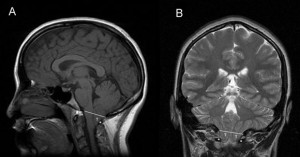 In the next several decades the number of Alzheimer’s patients will continue to dramatically increase. Various teams of researchers worldwide are feverishly investigating precisely how the illness develops.
In the next several decades the number of Alzheimer’s patients will continue to dramatically increase. Various teams of researchers worldwide are feverishly investigating precisely how the illness develops.
Inflammation as a New Therapeutic Approach For Alzheimer’s Disease
A team of scientists under the guidance of the University of Bonn and University of Massachusetts (USA) and with the participation of the German Center for Neurodegenerative Diseases have discovered a new signaling pathway in mice which is involved in the development of chronic inflammation which causes nerve cells in the brain to malfunction and die off. The results are now being published in the renowned scientific journal “Nature”.
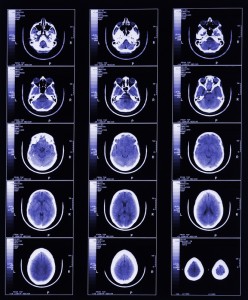 For the very first times, surgeons at Johns Hopkins have used a brain-implanted pacemaker device to try to slow memory loss in a patient suffering from the early stages of Alzheimer’s. So far there’s only one patient with a memory-saving zapper, but a second is on the way along with about 40 others over the course of the next year, with the help of several other research institutes. After implantation, the pacemakers zap a part of the brain called the fornix with up to 130 blasts of electricity per second, all without disturbing the brain’s owner.
For the very first times, surgeons at Johns Hopkins have used a brain-implanted pacemaker device to try to slow memory loss in a patient suffering from the early stages of Alzheimer’s. So far there’s only one patient with a memory-saving zapper, but a second is on the way along with about 40 others over the course of the next year, with the help of several other research institutes. After implantation, the pacemakers zap a part of the brain called the fornix with up to 130 blasts of electricity per second, all without disturbing the brain’s owner.
The researchers hope that this will be an effective solution at treating Alzheimer’s in and of itself, but if nothing else it should at least provide valuable information that could further other treatments as well. Johns Hopkins is currently accepting volunteers for the program, and hopefully those implants will give them—and all who follow—a fighting chance at hanging on to those precious memories.
Read more: ExtremeTech
TRENTON, N.J. (AP) — For Alzheimer’s patients and their families, desperate for an effective treatment for the epidemic disease, there’s hope from new studies starting up and insights from recent ones that didn’t quite pan out.
If the new studies succeed, a medicine that slows or even stops progression of the brain-destroying disease might be ready in three to five years, said Dr. William H. Thies, chief medical officer of the Alzheimer’s Association. The group assists patients and caregivers, lobbies for more research and helps fund studies.
“The number of smart people working on this problem means to me we’ll begin to manage it better in the very near future,” Thies said. “It may be as short as three years away.”
That’s only if government and other sources provide tens of millions of dollars for additional research and more patients join clinical studies.… [Continue Reading]
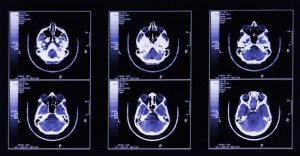 By: SHARON WORCESTER, Clinical Neurology News Digital Network
By: SHARON WORCESTER, Clinical Neurology News Digital Network
The implantation of subdural electrodes for the treatment of intractable epilepsy is beneficial, but requires careful surveillance during the monitoring period, according to findings from a study of 91 consecutive patients.
This is especially true for those who undergo large subdural grid placement, as these patients have an increased risk for complications, Dr. Fernando L. Vale of the University of South Florida, Tampa, and his colleagues reported online in Clinical Neurology and Neurosurgery.
Of 508 patients who underwent surgical intervention for the evaluation and treatment of medically resistant epilepsy at a single center from 1999 to 2010, 91 (18%) required invasive subdural electrode placement and were included in this study.… [Continue Reading]
 LONDON – More than two-thirds of patients with medically refractory chronic cluster headache responded to on-demand, self-administered sphenopalatine ganglion stimulation with acute pain relief, less frequent attacks, or both.
LONDON – More than two-thirds of patients with medically refractory chronic cluster headache responded to on-demand, self-administered sphenopalatine ganglion stimulation with acute pain relief, less frequent attacks, or both.
The prophylactic effect – a reduction in cluster attack frequency, but in most cases without acute pain relief – came as a surprise to investigators in the prospective, controlled, multinational Pathway CH-1 study, Dr. Jean Schoenen admitted at the European Headache and Migraine Trust International Congress.
“This was the largest, most rigorous study to date of an implantable medical device for headache treatment. The study was not designed to look at attack frequency; it was designed to look at acute response. Yet, we have this preventive effect that I think now has to be confirmed in another well-designed trial,” said Dr. Schoenen, coordinator of the headache research unit at the University of Liege (Belgium).… [Continue Reading]
 Pediatric primary care and emergency providers often feel ill prepared or lacking in resources, time, or training to effectively manage concussion in children and educate families about the condition and recovery, according to a survey published in the November 2012 issue of Pediatrics.
Pediatric primary care and emergency providers often feel ill prepared or lacking in resources, time, or training to effectively manage concussion in children and educate families about the condition and recovery, according to a survey published in the November 2012 issue of Pediatrics.
A recent survey showed that a number of pediatric primary care and emergency care providers don’t feel prepared or often lack resources to effectively manage concussion in children.
The findings come from a survey assessing what practicing physicians, nurse practitioners, and physician assistants know about concussion as well as their treatment practices and any perceived obstacles to managing the condition, reported by Dr. Mark R. Zonfrillo of the center for injury research and prevention at Children’s Hospital of Philadelphia and the University of Pennsylvania and his associates (Pediatrics 2012;130:1-6).
An online survey using multiple-choice, Likert scale, and open-ended questions was sent to 276 providers in the Children’s Hospital of Philadelphia Care Network and Emergency Department e-mail lists. The 53% response rate included 145 responding providers with a diverse range of experience. Sixty-one percent were pediatric primary care providers, and 39% were pediatric emergency care providers.… [Continue Reading]
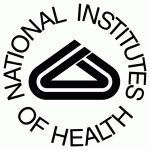 A mutation found in about one in 200 Icelanders older than 85 raised the risk of developing Alzheimer’s disease threefold, researchers said.
A mutation found in about one in 200 Icelanders older than 85 raised the risk of developing Alzheimer’s disease threefold, researchers said.
The mutation, in an immunoregulatory gene known as TREM2, was more common in Alzheimer’s disease patients than in the general 85-and-older population in Iceland with an odds ratio of 2.91 (95% CI 2.09 to 4.09, P=3.42×10-10), reported Kari Stefansson, MD, PhD, of deCode Genetics in Reykjavik, Iceland, and colleagues.
Because of the gene’s function within the central nervous system, the mutation “may lead to an increased predisposition to Alzheimer’s disease through impaired containment of inflammatory processes,” the researchers wrote online in the New England Journal of Medicine.… [Continue Reading]
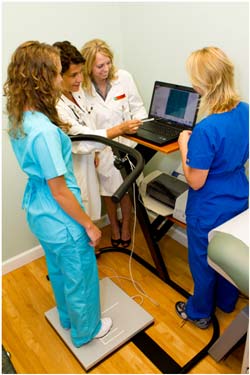 Michigan Brain & Spine Physical Therapy And Rehabilitation
Michigan Brain & Spine Physical Therapy And Rehabilitation
http://www.ptandrehabilitation.com/
Balance Training & Vestibular Rehabilitation
The Michigan Brain and Spine Surgery Center is proud to introduce their Falltrak Vestibular Rehabilitation Program. Commonly referred to as “Balance Training,” the program is available for patients with various vestibular problems, including central and/or peripheral vestibular dysfunction, and paroxysmal vertigo.
Balance training is also available for patients with unsteady gait and history of falls. This program is especially beneficial for elderly patients who have balance problems and would like to prevent injuries from falling.
Dr. Lucia Zamorano and her staff treat a wide variety of patients with their Balance Training Program. Patients who consistently attend training sessions report a range of benefits, including increased focus and concentration, no longer requiring assistance to walk, and drastic decreases with balance problems and feelings of dizziness.
Patients who feel they may benefit from balance training should be screened with video nystagmography (VENG) to determine the cause of their balance problems/dizziness. If a patient is a candidate for the program, then he or she will be scheduled for weekly training sessions convenient to the patient’s schedule.
 Indications:
Indications:Vestibular rehabilitation is offered five days a week at the Troy clinic. The typical schedule for patients is two sessions per week, with each visit lasting approximately one hour. During the sessions, patients are guided through a series of balance exercises, requiring minimal physical exertion.
Find out more about Balance+Plus VNG System at http://www.balance-plus.com/bp-vng.html
| Phone: | (248) 723-2477 |
| Fax: | (248) 681-3209 or (248) 481-3913 |
| eFax: | (248) 671-0621 |